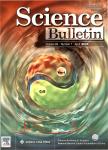Changing patterns of urban-rural nutrient flows in China:driving forces and options
Changing patterns of urban-rural nutrient flows in China: driving forces and options作者机构:Department of Earth System Science Ministry of Education Key Laboratory for Earth System Modeling Tsinghua University Beijing 100084 China
出 版 物:《Science Bulletin》 (科学通报(英文版))
年 卷 期:2017年第62卷第2期
页 面:83-91页
核心收录:
基 金:supported by National Basic Research Program of China(2013CB956600) National Natural Science Foundation of China(41371491) Tsinghua University,China,(2013M540087)
主 题:养分循环 驱动力 变化规律 流动 中国 废物处理系统 营养循环 技术壁垒
摘 要:Nutrient recycling has been practiced for thousands of years in China to maintain food production without environmental pollution. In the past three decades, however, the traditional nutrient recycling systems have been replaced with waste treatment systems, which have resulted in rapid and severe environmental pollution. By analyzing the primary driving forces of the changing nutrient flows(technology, labor costs, food supplies, fertilizer demands, environmental quality, human health, and public awareness), this paper argues that technology fundamentally motivated the nutrient-recycling strategy to address the malnutrition problem in traditional societies but has constrained the reconstruction of nutrient recycling systems in modern cities. With the availability of synthetic fertilizers in modern society, the lack of interdisciplinary views in policy making for nutrient management is the root cause of today s environmental situation. Ongoing fast urbanization has concentrated more nutrients in urban areas, creating the need for a national nutrient management plan to coordinate multiple ministries and fix the uncoupled nutrient cycling between urban and rural systems. Rebuilding the traditional nutrient-recycling systems is an environmentally and economically effective solution. There are three fundamental technological barriers to reconstructing the nutrient recycling systems, as follows: userfriendly toilets, the separation of sewage pipelines, and easy-to-use organic fertilizers made from human manure or other organic waste. Overcoming these barriers requires building institutional mechanisms,developing the necessary infrastructure, creating research funding, and providing open experimental platforms for technological development.



